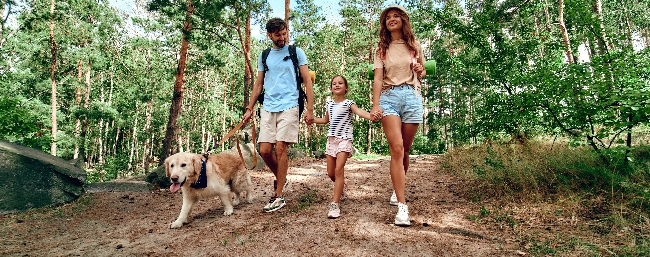Best family dogs: Looking at the best dog breeds for families
Dogs can bring love, joy and responsibility to a young family. But making sure you choose the best family dog for your kids, home, lifestyle and needs is really important.
That’s why we’ve put together this in-depth guide to help you look at the best dog breeds for families.
Brief summary
- You should aim to choose a dog that will suit your lifestyle
- Each dog breed will come with their own personalities and challenges
- Dogs should be well socialised and puppy or dog training classes are recommended
- Dogs can cost over £15000 during their lifetime
- Whatever dog you choose, never leave them unattended with children
Benefits of dogs on children
Every child should grow up in a household with a four-legged friend. That's the general finding following a study from Pediatric Research. While the study looked at the increased physical activity in children from dog-owning homes against those living in non-canine houses, the study found a host of other benefits. One of those was that the children felt like they were part of a team that worked together to ensure the dog was well looked after and kept happy and healthy. Other results found that children had higher self-esteem, empathy, and a greater sense of identity.
Not only that, a separate study on children's reading found that kids were more likely to read books above their level when reading to a dog (versus reading to their parents).
It’s also been suggested that dogs can significantly reduce anxiety levels in children and teenagers. This is because interacting with pets helps young people with their stress management, leading to happier children and healthier minds.
Benefits of dogs on adults
It’s not only children who benefit from having a dog — adults do too. One study found that dog owners are four times more likely to meet their daily exercise requirements than non-dog owners. So owning a dog is good for your heart, helps keep you in shape and allows you to spend more time with our families as you’ll stay healthier for longer.
Combined with the fact that dogs increase our oxytocin, known as the love hormone, living and loving dogs make us happier, healthier, and less stressed.
How to choose the best family dog
Dogs make great family pets, but choosing the right one for your family is vital. You should base your decision on these factors:
Dog Temperament
This is the dog's general personality type. While some breeds are better known than others for specific personality markers, the way they’re brought up and interacted with plays a huge part, so don't let stereotypes and stories stop you from getting a dog you think would fit with your family. Most important is meeting the dog first with your family and seeing if it’s a natural fit. As with people, sometimes you know if a dog’s right for you.
Family needs
This will play a massive role in your decision. If you live in a flat, work full time, and your children are in school five days a week, a high-energy dog may not fit your lifestyle. But an adventurous dog might be ideal if your family enjoys camping and outdoor activities. Think carefully about why you want a family dog for and how the next 10 to 15 years of your lives together are likely to unfold.
Understanding the dog's needs
Your dog will have unique requirements to ensure their happiness and avoid behavioural issues. Understanding each breed's needs and meeting them is vital in choosing the right dog for your family.
Age range
Do you have the time and energy to look after and train an excitable puppy, or would an older dog suit your lifestyle? Getting a puppy is a lot like having a toddler, so both the age of your children and the age of the dog should complement each other.
Level of care or grooming
Some dogs may only need occassional brushing, while others will need constant grooming at home and regular visits to the groomers. Will you have the time? Certain breeds have specific healthcare needs, while others are low-maintenance. These factors should influence your decision.
All dogs need care, love, and attention to become well-rounded family members. Recognising your situation's constraints will simplify this process, helping you find the ideal dog for your family.
Ongoing costs of owning a dog
Dog ownership comes with some costs. Other than the initial cost of buying (or adopting) your dog, there will be things like:
Bedding - £5 to £250
Toys - £1 to £50
Lead - £5 to £60
Collar - £5 to £60
Harness - £5 to £200
These items typically last for a while, at least when your pup stops growing. Some of the higher costs will be specific to certain activities, such as saddle bags for long-distance hiking and harnesses for canicross.
There are, however, some costs you'll need to pay monthly. These can include:
Food
Depending on the breed and food type, you can expect to pay anywhere from £15 to £100 a month to feed your dog.
Pet insurance
The truth is, anything can happen to your dog, from other dog attacks to cancer. Comprehensive pet insurance covers many scenarios but cost can vary greatly based on cover type, your pet's age and breed, and other factors. The average cost of pet insurance is currently more than £270 a year.
Routine healthcare
Routine healthcare covers things like vaccinations, flea and worm treatment, nail trimming etc. All dogs should be vaccinated; a primary course of vaccinations can cost around £80, and flea and worm treatment is likely come to about £20 a month. Joining a routine healthcare subscription plan, such as Pet Health Club, can save you more than £200 a year and comes with many other benefits, such as health checks and discounts on food and toys.
Microchipping
By law, all dogs will have to be microchipped. With Pet Health Club™ you get your microchip as part of your plan. If you were to pay for a microchip, it would usually cost you a one-off payment of between £10 and £20.
Over a dog's lifetime, you can expect to pay between £5000 and £15000 for your dog. During the cost of living crisis, be sure you can manage these expenses without your pet becoming a burden. Giving up a dog due to financial constraints is devastating and adds pressure to already overstretched rescue centres and dog charities.
Best small family dogs
Bichon Frise
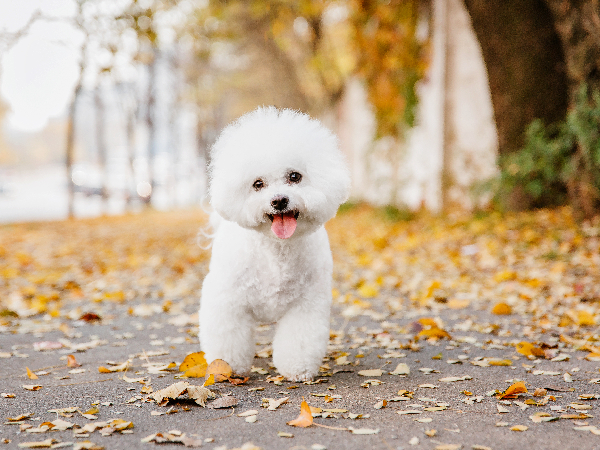
The Bichon Frise is a playful, happy dog that makes an excellent family pet and wonderful companion.
Lighthearted, lively and cheerful, they were initially bred as circus performers, making them highly intelligent and eager to learn. Training this tremendous little dog would be a joy for the whole family.
They are best known for their fluffy white coat which needs regular brushing to stop tangles and knots from forming. They will benefit from a professional groom every six weeks or so.
They are low-maintenance dogs, needing less exercise than most other dogs and typically live for around 12 - 15 years.
Shih Tzu
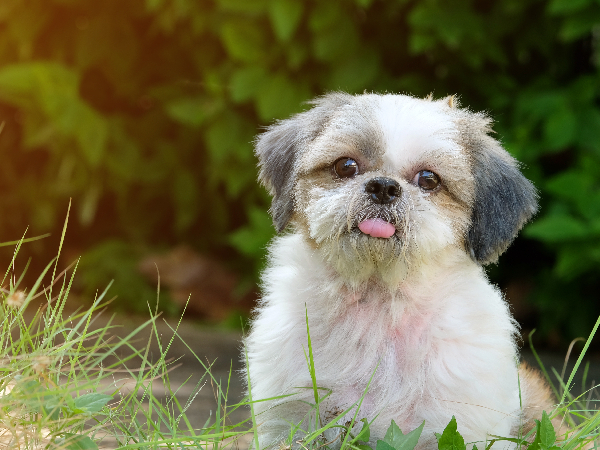
The Shih Tzu is a lovable, cuddly little ball of fun, happy to curl up on the sofa and play games with the kids. They are great companions for families with less active lifestyles, possibly those looking after very young children or elderly relatives in their care. However, they do like company and are prone to separation anxiety if left alone for an extended period of time.
Two brisk walks and lots of play will keep this little dog happy. The only downside, if you see it that way, is that these little dogs can be pretty stubborn with a short attention span, which can make them challenging to train. If you're willing to persevere, however, they make excellent companions.
Their grooming needs are low, with a brush every day to keep their longer fur free of knots and tangles. Because they shed very little, they are an excellent choice for families with allergies.
As a smaller dog, Shih Tzu's life expectancy is 10 - 15 years.
Italian Greyhound
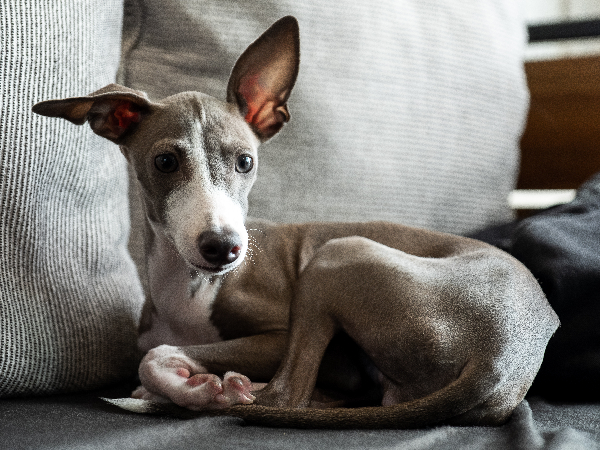
These beautiful dogs are known for their lively personalities. They won't leave their owner's side, earning them the nickname 'Velcro dogs.' Although they have bundles of energy, once that's burnt off, they love nothing more than a good long snooze on the couch. Perfect for young families who are beginning to explore the world.
Because of their short coat, Italian Greyhounds will only need a brush once or twice a week to keep them fresh. They are biddable to training but can be sensitive to scolding as they're quite timid. Treat them well, and you'll have a perfect pal.
Although the smallest of the sight hounds, they will still need at least 45 minutes of exercise a day. Unfortunately, if you under-exercise your Italian Greyhound, you'll see some destructive and unwanted behaviour appear.
Again, because of their small stature, the life expectancy of the Italian Greyhound is 10 - 15 years and could make one of the best family dogs.
Best medium dog breeds for families
Golden Retriever
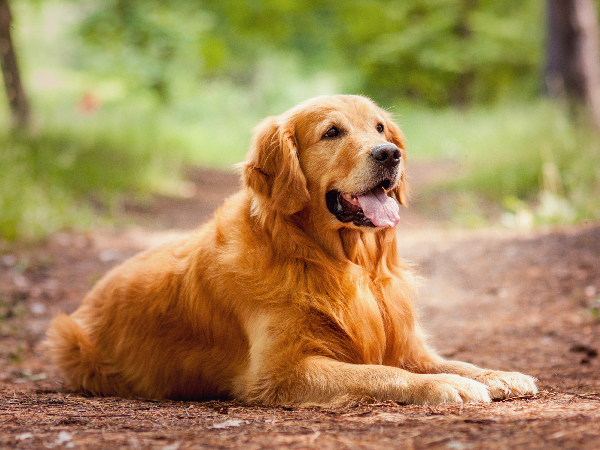
Friendly, intelligent and affectionate, there's a reason that the Golden Retriever is one of the country's most loved dogs. They are easy to please and easy to train, but you'll also see some of the most unique personalities in the dog world.
Highly sociable animals will get on well with dogs, cats and children, becoming a huge and loving part of your family from the get-go. They are high-energy dogs, however, but if you're willing to give them two sizable walks a day plus plenty of stimulation in between, you'll find yourself rewarded.
If you like a clean home, don't want to vacuum every day, or wear a lot of black, they may not be the best choice. Golden Retrievers leave their hair around. A lot. They'll need much brushing to counter this moulting but only need a bath if they are particularly mucky. As they love water, this might happen a lot.
Loving and beautiful dogs, you can expect your Golden Retriever to be part of your family for 10 - 12 years.
The Beagle
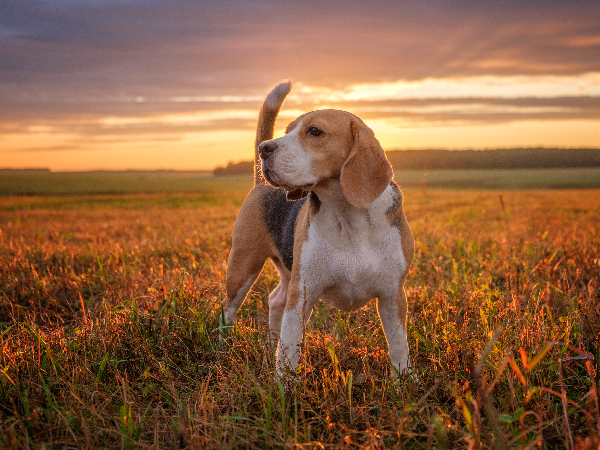
If you're looking for an adventurous, loving breed that wants to be at the centre of everything you do, the Beagle could be the dog for you. These are great family dogs and fine animals for children of all ages.
Beagles can go and go and go, so if you're looking for a dog that is happy for a quick walk around the block, they probably aren't suitable for you. But, on the other hand, if you're happy to walk for a couple of hours a day and let them sniff and snuffle, they'll make a great companion.
Intelligent and easy to please, the Beagle will respond well to training and love games where they can exercise their noses. Consider scent work as they get older as a way to stimulate and tire them.
Although they shed, they need minimal grooming, just a weekly brush or two. However, you'll need to keep an eye on their ears for signs of infection. Beagles have a life expectancy of 12 - 15 years, making them an excellent choice for dog lovers.
Labrador Retriever

One of the most popular breeds in the UK for the last 20 years, the Labrador is a staple of British parks and cities. Loving, devoted and food-orientated, the Labrador is a perfect pet for all families.
They'll need two sizable walks a day and are happy to join you jogging, hiking, swimming or just playing fetch. A friendly dog, you'll be sure to meet new people whenever you head out the door.
Even though they're easy to train because they love working for food, Labradors are interested in everything, so they may quickly become distracted. In addition, because they're so food orientated, they can be at risk of obesity as their activity levels drop later in life. Maintaining a pro[per diet will counteract this, though.
Fantastic with everyone, the Labrador is a perfect partner for your children. Loving and loyal, you can expect a Labrador to live for 10 - 14 years.
The English Bull Terrier

Don't let their shark-shaped head and unwarranted reputation put you off; the English Bull terrier is a loving, loyal, sweet-natured dog that would make a wonderful addition to any family home.
Loving but strong-willed, they'll need patient training. Because of their appearance and some misconceptions about their nature, members of the public can jump to the wiring conclusion about your sweet loving pup. Because of this, socialising and training them to be perfect pets is more important than with other breeds.
They need two sizable walks a day, and under-exercised dogs can show destructive behaviour. This can lead to unwanted chewing, which can lead to blockage of the bowel, requiring surgery.
If you decide to bring an English Bull terrier into your home, you can expect them to live for 10 - 14 years.
Best large dog breeds for families
Bernese Mountain Dog
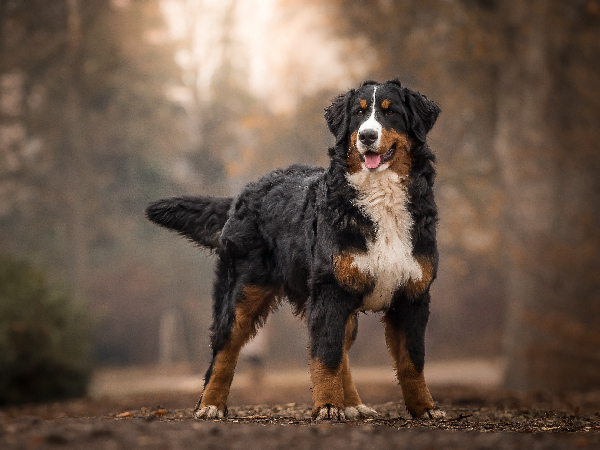
Big and cuddly, the Bernese Mountain Dog is known for being affectionate, calm and sweet-natured, making it a perfect family companion that is especially good with children. They are devoted to their family and thrive on human companionship, hoping to join you wherever you go.
As an intelligent working dog, training this dog should be no problem, so long as you keep training sessions short and fun. As with all dogs, training should be started young to get the best from your dog.
With their heavy coats, grooming is a must. Brush them regularly; like the Newfoundland, they may get extremely muddy in the winter. And because of their working roots, you'll need to take them out twice a day, whatever the weather.
With love and training, the Bernese Mountain Dog would make a fantastic family dog who, all being well, will be a part of your family for 8 - 10 years.
Standard Poodle
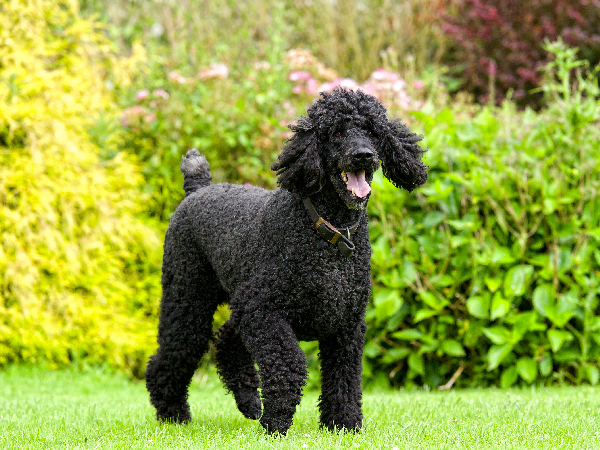
Smart, loving and playful, the Standard Poodle is likely to make a great addition to a family with active kids. Bigger than many people think, Standard Poodle weighs around 25kg but will shower you with love and affection.
Incredibly intelligent dogs, they need exercise and mental stimulation to stop them from getting bored, but if you want to bring the kids on their training journey, you won’t be disappointed. This will also help create equal attachments, as Poodle’s can get attached to one person if they see them as the main caregiver.
It’s often said that Poodles are hypoallergenic. But this isn’t exactly true, as no dog is ever completely hypoallergenic. However, they shed very infrequently and are highly sought after by people who may be allergic to dogs that do shed. They like to be groomed and will need to be trimmed to keep them cool and their coat short.
The Standard Poodle could be a wonderful pet for active families, and have a life expectancy of 10 to 15 years.
Dogs and children
Dogs and children can be great friends, but you must remember that dogs are still animals. Children always need close supervision and must always be taught to be gentle and treat dogs with kindness. Even the most laid-back dog will try to remove itself from a situation that it doesn't like, such as being poked, grabbed, prodded and squeezed. How they do this can have consequences for everyone. As an adult and parent, it's your responsibility to ensure the safety of both child and dog.
Learn to read your dog's body language and teach your children the same. For example, if your dog growls, shows its teeth or raises its hackles, you can diffuse the situation. Dogs may be protective of their food or toys, known as resource guarding. Always teach children to give a dog space when eating or chewing on their toys.

Let sleeping dogs lie. It's important not to let your children wake up sleeping dogs. Always provide your dog with a safe space away from children where they can be alone. Crate training is a fantastic way to give your dog their own space.
Don't let your child feed the dog from the table. Not only will this possibly lead to begging, a trait no dog owner should encourage, but it can also lead to nipped hands.
The most important rule of having children and dogs is never to leave children unattended with a dog, no matter how calm and good with kids they are.
Need more info?
For more advice on how to choose a dog for your family, have a chat with your local vet. Locate your nearest vet using our Find a Vet page, or speak to a vet online today.
